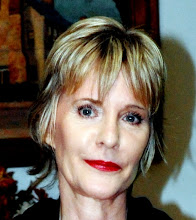 |
| Self-publishing has become a trend within the last few years. |
2. Edit. It is advised to get another party to do this, recommendly someone with editing experience.
3. Design. This includes cover art and formatting to the publication type.
4. Print. You can go through certain agencies to help finalize your book.
5. Market. Once your book is out, you have to make it known.
For more steps and information, visit www.selfpublishing.com.
Last year, the number of self-published titles increased by 59 percent. That’s 422 percent since 2007, according to information agency Bowker.
“The most successful self-publishers don’t view themselves as writers only but as business owners,” Beat Barbian, Bowker director of identifier services, said in a press release.
Some local authors that have chosen this route are David Tavernier, James Osbon and Sasscer Hill.
Hill has experience with both traditional publishing and self-publishing.
To date she has seven books. Some are novels, while the remaining are short stories.
This short story was self-published by local author Sasscer Hill.
Hill's first book, “Full Mortality,” was published in November 2010.
It took her years of rejection to get to that point.
“I sent out 40 query letters (before I found my agent),” Hill said.
Once she was interested, that agent had to go to work trying to attract attention to Hill’s novel.
The agent went to mainstream publishers with no success.
Finally, Hill met the publisher of Wildside Press, and he liked her book.
Wildside Press is an independent publisher based out of Maryland.
It has now published three of her books.
Her short stories are published with Wild Spirit Press – a company that Hill created.
She explains self-publishing simply as “you do it yourself,” she said.
She writes her stories in WordPerfect. Publishers often prefer submissions from Microsoft Word, she said.
With a publishing company, editors are often available.
When it comes to self-publishing, you are your own editor.
However, “you should have someone else do it,” Hill advised. “You never see your own mistakes, no matter how careful you are.”
This other person can be referred to as a “book doctor,” according to David Carnoy, CNET executive editor and self-published author.
He or she can be hired or be a friend.
If you hire an editor, you might be getting more than you expected.
“After I made the changes (my editor) suggested, he made some calls to agents he knew, and some were willing to take a look,” Carnoy wrote in his CNET article.
Ways to find an editor are to ask around, contact a local university or just look inside a published book.
Self-publishers have control over their covers.
Hill hired artists to produce some of her covers.
The process has been as simple as giving the designer a photo and letting him or her work with it; this was how the cover of her “Rare Highs, Killer Lows: True Tales from the Track” book was created.
When it comes to publishing with a mainstream company, you often have no say on your cover, Hill said.
For example, she was a fan of “The Sea Horse Trade” book cover but not so much of the “Racing from Death” one.
A piece of advice for producing your cover – make it look good small.
This mainly comes in handy when it comes to marketing and selling your book online.
“Your book has to stand out as a thumbnail image online because that’s how most people are going to come across it,” Carnoy wrote.
Which brings up one of the following issues – publishing a print book versus publishing digital one.
Hill did both for her novels. Her short stories – her self-published works – are only available as digital books, or e-books.
Three leading ebook manufacturers are Amazon’s Kindle, Barnes and Noble’s Nook and Apple’s iPad.
There are many advantages found to ebook printing and e-books in general.
Local author Alice W. Ross finds e-readers – the device that holds the e-books – convenient.
“It’s so much easier to deal with and more economical,” she said.
Ross got her first Nook when they were released in 2009.
She loves the fact that you can download and store several books on one device and then take them to go.
Those editions are usually cheaper, too, than their print versions, she said.
This helps when it comes to selling your book, Carnoy pointed out.
There are certain requirements attached to publishing an e-book, though.
Ross said each e-book company has its own rules when it comes to formatting the book.
However, there are companies out there to help with this process.
SmashWord is a website Ross uses for this.
Ross’s book “The Pictorial Adventure” is only available as an e-book. This will also apply to her upcoming novel.
However, if you prefer to print, there are companies out there that will simply just print your manuscript for you, without taking control of your book.
For example, Tavernier published “Stories of the Rich and Famous” with OutSkirts Press, while Osbon published his book “Sand River” with Xlibris.
A function with each company is aiding self-publishers.
When your book is out, you have to get the word out about it.
“Marketing is all I do,” Hill said.
Ross and she use Facebook and Twitter to help make contact with readers and publicize their books and themselves.
They both have their own blogs, while Hill also has a website.
Hill also attends conferences regularly.
For more information on the self-publishing process, visit www.selfpublishing.com or http://reviews.cnet.com/8301-18438_http://cnet.co/KHB59y.
Read more: E-books offer authors alternative to traditional publishing process | Aiken Standard
Follow us: @aikenstandard on Twitter | aikenstandard on Facebook


